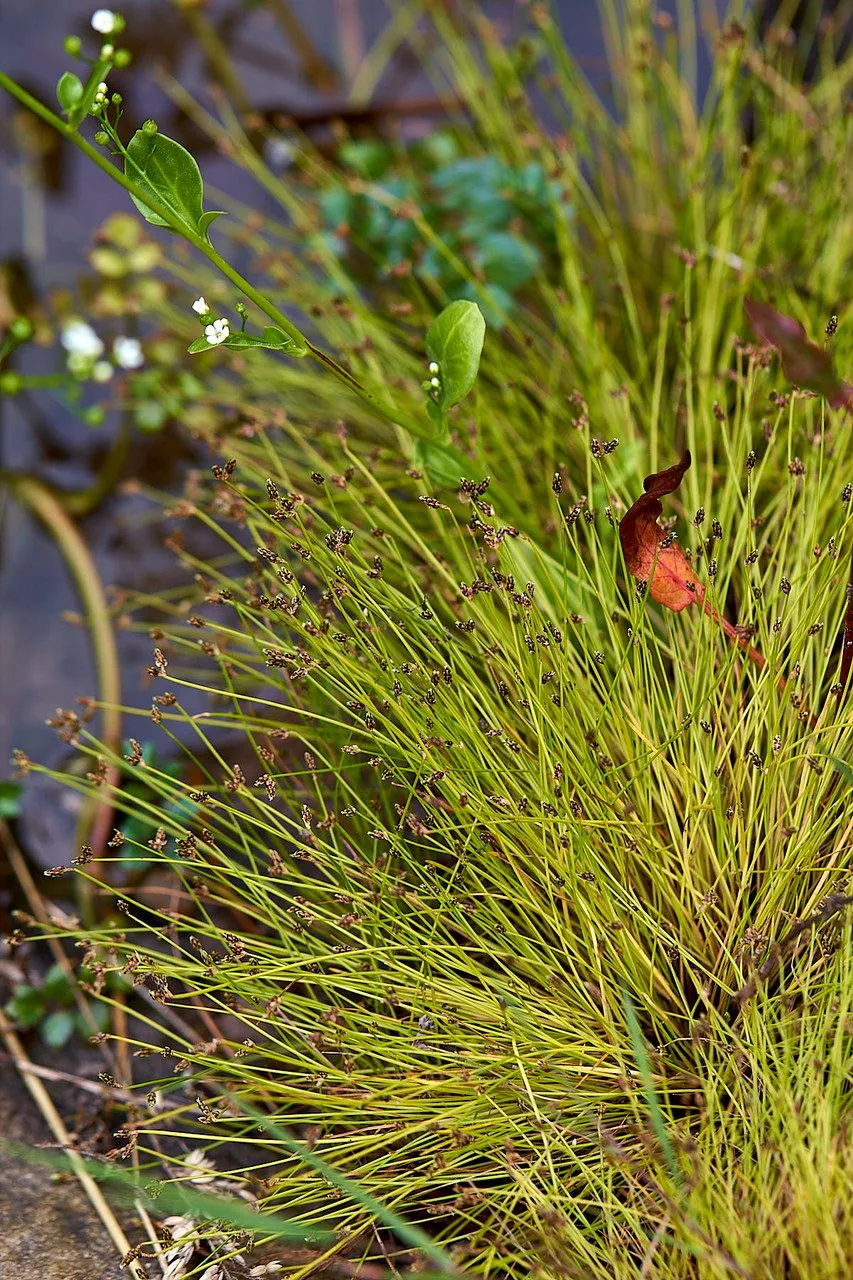
Author: (L.) R.Br.
Bibliography: Prodr. Fl. Nov. Holland.: 222 (1810)
Year: 1810
Status: accepted
Rank: species
Genus: Isolepis
Vegetable: False
Observations: Temp. & Subtrop. Eurasia, Africa
Bristleleaf bulrush, known scientifically as Isolepis setacea, is a fascinating and resilient plant species belonging to the Cyperaceae family. This intriguing plant was first detailed comprehensively in the early 19th century by the renowned botanist Robert Brown, as noted in his seminal work “Prodr. Fl. Nov. Holland.”
Isolepis setacea thrives predominantly in temperate and subtropical regions across Eurasia and Africa, demonstrating a remarkable adaptability to various environmental conditions. This enduring species has evolved to flourish in these diverse climates, showcasing a widespread distribution that speaks to its ecological versatility.
The Bristleleaf bulrush is characterized by its delicate, bristle-like leaves which contribute to its common name. These slender, grass-like leaves create a fine, airy appearance that makes the plant an unobtrusive yet aesthetically pleasing component of its native habitats.
Bristleleaf bulrushes are often found in wetland areas, including marshes, ditches, and along the edges of ponds and streams. Their presence in these ecosystems plays a vital role in maintaining the health and stability of wetland habitats. The plant’s dense network of roots helps in soil stabilization, reducing erosion, and providing a habitat for various forms of aquatic and semi-aquatic wildlife.
Moreover, the Bristleleaf bulrush has significant ecological value beyond its physical appearance. It contributes to the overall biodiversity of its habitat, supporting numerous insect species and providing a food source and nesting material for different birds. Additionally, its ability to thrive in wetlands aids in water filtration, improving the quality of water bodies by trapping sediments and absorbing pollutants.
Despite its importance, bristleleaf bulrushes can sometimes be overlooked due to their unassuming presence. However, their role in ecosystem health and biodiversity makes them a critical species for conservation and study.
In summary, Bristleleaf bulrush (Isolepis setacea) is more than just a common plant found across Eurasia and Africa. Its ecological contributions and adaptability make it a key player in wetland ecosystems, underscoring the importance of preserving such unassuming yet vital plant species.
Deu: borstige moorbinse, borstige schuppensimse
Eng: bristleleaf bulrush, bristle club-rush, bristle clubrush, bristle-leaved bulrush
Nor: bustsivaks
Dan: børste-kogleaks
Nld: borstelbies
Fra: scirpe sétacé, isolépis sétacé, souchet sétacé
Swe: borstsäv
Cym: clwbfrwynen fach, clwbfrwynen fechan, clwbfrwynen gwychog, clwbfrwynen wrychog, clwp-frwynen fechan, clwpfrwynen fach
Ita: lisca setacea
En: Bristleleaf bulrush, Bristle Club-rush, Bristle clubrush, Bristle-leaved bulrush, Bristle-like Mud-rush
Da: Børste-kogleaks
Nl: Borstelbies
Fr: Scirpe sétacé, Isolépis sétacé, Souchet sétacé
De: Borstige Moorbinse, Borstige Schuppensimse, Borsten-Moorbinse, Moorried
It: Lisca Setacea
No: Bustsivaks
Sv: Borstsäv
Cy: Clwbfrwynen Fach, Clwbfrwynen Fechan, Clwbfrwynen Gwychog, Clwbfrwynen Wrychog, Clwp-Frwynen Fechan, Clwpfrwynen Fach
Taken Jul 15, 2004 by Photoflora – Jean-Luc TASSET (©)
Taken Aug 4, 2012 by Tela Botanica − Marie PORTAS (cc-by-sa)
Taken Jul 20, 2018 by Tela Botanica − José Luis Romero Rego (cc-by-sa)
Taken Aug 4, 2012 by Tela Botanica − Marie PORTAS (cc-by-sa)
Taken Jun 16, 2022 by Fero Looxi (cc-by-sa)
Taken Jul 15, 2004 by Photoflora – Jean-Luc TASSET (©)
Taken Aug 30, 2011 by Tela Botanica − Bertrand BUI (cc-by-sa)
Taken Aug 27, 2004 by Tela Botanica − Liliane Roubaudi (cc-by-sa)
Taken Aug 27, 2004 by Tela Botanica − Liliane Roubaudi (cc-by-sa)
Taken Jul 2, 2021 by Sans Attaches (cc-by-sa)
Taken Aug 15, 2005 by Photoflora – Benoit BOCK (©)
Taken Aug 15, 2005 by Photoflora – Benoit BOCK (©)
Taken Jul 15, 2004 by Photoflora – Benoit BOCK (©)
Taken Sep 27, 2013 by Tela Botanica − Marie PORTAS (cc-by-sa)
Taken Jul 20, 2018 by Tela Botanica − José Luis Romero Rego (cc-by-sa)
Taken Jan 16, 2022 by Antonio Romio (cc-by-sa)
Taken May 12, 2021 by Stephane rouaud (cc-by-sa)
Taken Jun 16, 2022 by Fero Looxi (cc-by-sa)
Taken Jul 2, 2021 by Sans Attaches (cc-by-sa)
Taken Jul 2, 2021 by Sans Attaches (cc-by-sa)
Taken Aug 22, 2018 by Janneke Daemen (cc-by-sa)
Taken Jan 1, 1970 by Photoflora – L’Abbé COSTE (©)
Taken Jul 15, 2011 by Photoflora – Benoit BOCK (©)
Taken Jan 1, 1800 by Tela Botanica − Daniel MATHIEU (cc-by-sa)
Taken Jun 30, 1849 by Tela Botanica − Herbier PONTARLIER-MARICHAL (cc-by-sa)
Taken Jul 19, 2012 by Tela Botanica − David MERCIER (cc-by-sa)
Growth habit: Graminoid
Ph maximum: 6.5
Ph minimum: 5.5
Light: 5
Atmospheric humidity: 7
Bloom months: [‘jun’, ‘jul’, ‘aug’, ‘sep’]
Soil nutriments: 3
Family: Myrtaceae Author: (F.Muell.) K.D.Hill & L.A.S.Johnson Bibliography: Telopea 6: 402 (1995) Year: 1995 Status:…
Family: Rubiaceae Author: Pierre ex A.Froehner Bibliography: Notizbl. Bot. Gart. Berlin-Dahlem 1: 237 (1897) Year:…
Family: Sapindaceae Author: Koidz. Bibliography: J. Coll. Sci. Imp. Univ. Tokyo 32(1): 38 (1911) Year:…
Family: Asteraceae Author: A.Gray Bibliography: Pacif. Railr. Rep.: 107 (1857) Year: 1857 Status: accepted Rank:…
Family: Fabaceae Author: Medik. Bibliography: Vorles. Churpfälz. Phys.-Ökon. Ges. 2: 398 (1787) Year: 1787 Status:…
Family: Aspleniaceae Author: (Cav.) Alston Bibliography: Bull. Misc. Inform. Kew 1932: 309 (1932) Year: 1932…